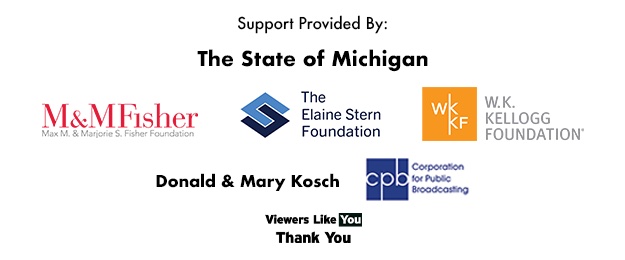Grades
Standard
Pose questions that connect the ideas of several speakers and respond to others’ questions and comments with relevant evidence, observations, [...]
Acknowledge new information expressed by others, and, when warranted, qualify or justify their own views in light of the evidence [...]
Analyze the purpose of information presented in diverse media and formats (e.g., visually, quantitatively, orally) and evaluate the motives (e.g., [...]
Delineate a speaker’s argument and specific claims, evaluating the soundness of the reasoning and relevance and sufficiency of the evidence [...]
Present claims and findings, emphasizing salient points in a focused, coherent manner with relevant evidence, sound valid reasoning, and well-chosen [...]
Integrate multimedia and visual displays into presentations to clarify information, strengthen claims and evidence, and add interest.
Adapt speech to a variety of contexts and tasks, demonstrating command of formal English when indicated or appropriate. (See grade [...]
Demonstrate command of the conventions of standard English grammar and usage when writing or speaking.
Explain the function of verbals (gerunds, participles, infinitives) in general and their function in particular sentences.
Form and use verbs in the indicative, imperative, interrogative, conditional, and subjunctive mood.
Demonstrate command of the conventions of standard English capitalization, punctuation, and spelling when writing.
Use words, phrases, and clauses to create cohesion and clarify the relationships among claim(s), counterclaims, reasons, and evidence.
Provide a concluding statement or section that follows from and supports the argument presented.
Write informative/explanatory texts to examine a topic and convey ideas, concepts, and information through the selection, organization, and analysis of [...]
Introduce a topic clearly, previewing what is to follow; organize ideas, concepts, and information into broader categories; include formatting (e.g., [...]
Develop the topic with relevant, well-chosen facts, definitions, concrete details, quotations, or other information and examples.
Use appropriate and varied transitions to create cohesion and clarify the relationships among ideas and concepts.
Use precise language and domain-specific vocabulary to inform about or explain the topic.
Provide a concluding statement or section that follows from and supports the information or explanation presented.
Write narratives to develop real or imagined experiences or events using effective technique, relevant descriptive details, and well-structured event sequences.
Engage and orient the reader by establishing a context and point of view and introducing a narrator and/or characters; organize [...]
Use narrative techniques, such as dialogue, pacing, description, and reflection, to develop experiences, events, and/or characters.
Use a variety of transition words, phrases, and clauses to convey sequence, signal shifts from one time frame or setting [...]
Use precise words and phrases, relevant descriptive details, and sensory language to capture the action and convey experiences and events.
Provide a conclusion that follows from and reflects on the narrated experiences or events.
Produce clear and coherent writing in which the development, organization, and style are appropriate to task, purpose, and audience. (Grade-specific [...]
With some guidance and support from peers and adults, develop and strengthen writing as needed by planning, revising, editing, rewriting, [...]
Use technology, including the Internet, to produce and publish writing and present the relationships between information and ideas efficiently as [...]
Conduct short research projects to answer a question (including a self-generated question), drawing on several sources and generating additional related, [...]
Analyze how particular lines of dialogue or incidents in a story or drama propel the action, reveal aspects of a [...]
Determine the meaning of words and phrases as they are used in a text, including figurative and connotative meanings; analyze [...]
Compare and contrast the structure of two or more texts and analyze how the differing structure of each text contributes [...]
Analyze how differences in the points of view of the characters and the audience or reader (e.g., created through the [...]
Analyze the extent to which a filmed or live production of a story or drama stays faithful to or departs [...]
Analyze how a modern work of fiction draws on themes, patterns of events, or character types from myths, traditional stories, [...]
Cite the textual evidence that most strongly supports an analysis of what the text says explicitly as well as inferences [...]
By the end of the year, read and comprehend literary nonfiction at the high end of the grades 6–8 text [...]
Determine a central idea of a text and analyze its development over the course of the text, including its relationship [...]
Analyze how a text makes connections among and distinctions between individuals, ideas, or events (e.g., through comparisons, analogies, or categories).
Determine the meaning of words and phrases as they are used in a text, including figurative, connotative, and technical meanings; [...]
Analyze in detail the structure of a specific paragraph in a text, including the role of particular sentences in developing [...]
Determine an author’s point of view or purpose in a text and analyze how the author acknowledges and responds to [...]
Evaluate the advantages and disadvantages of using different mediums (e.g., print or digital text, video, multimedia) to present a particular [...]
Delineate and evaluate the argument and specific claims in a text, assessing whether the reasoning is sound and the evidence [...]
Analyze a case in which two or more texts provide conflicting information on the same topic and identify where the [...]
Write arguments to support claims with clear reasons and relevant evidence.
Grades
Standard
Pose questions that connect the ideas of several speakers and respond to others’ questions and comments with relevant evidence, observations, [...]
Acknowledge new information expressed by others, and, when warranted, qualify or justify their own views in light of the evidence [...]
Analyze the purpose of information presented in diverse media and formats (e.g., visually, quantitatively, orally) and evaluate the motives (e.g., [...]
Delineate a speaker’s argument and specific claims, evaluating the soundness of the reasoning and relevance and sufficiency of the evidence [...]
Present claims and findings, emphasizing salient points in a focused, coherent manner with relevant evidence, sound valid reasoning, and well-chosen [...]
Integrate multimedia and visual displays into presentations to clarify information, strengthen claims and evidence, and add interest.
Adapt speech to a variety of contexts and tasks, demonstrating command of formal English when indicated or appropriate. (See grade [...]
Demonstrate command of the conventions of standard English grammar and usage when writing or speaking.
Explain the function of verbals (gerunds, participles, infinitives) in general and their function in particular sentences.
Form and use verbs in the indicative, imperative, interrogative, conditional, and subjunctive mood.
Demonstrate command of the conventions of standard English capitalization, punctuation, and spelling when writing.
Use words, phrases, and clauses to create cohesion and clarify the relationships among claim(s), counterclaims, reasons, and evidence.
Provide a concluding statement or section that follows from and supports the argument presented.
Write informative/explanatory texts to examine a topic and convey ideas, concepts, and information through the selection, organization, and analysis of [...]
Introduce a topic clearly, previewing what is to follow; organize ideas, concepts, and information into broader categories; include formatting (e.g., [...]
Develop the topic with relevant, well-chosen facts, definitions, concrete details, quotations, or other information and examples.
Use appropriate and varied transitions to create cohesion and clarify the relationships among ideas and concepts.
Use precise language and domain-specific vocabulary to inform about or explain the topic.
Provide a concluding statement or section that follows from and supports the information or explanation presented.
Write narratives to develop real or imagined experiences or events using effective technique, relevant descriptive details, and well-structured event sequences.
Engage and orient the reader by establishing a context and point of view and introducing a narrator and/or characters; organize [...]
Use narrative techniques, such as dialogue, pacing, description, and reflection, to develop experiences, events, and/or characters.
Use a variety of transition words, phrases, and clauses to convey sequence, signal shifts from one time frame or setting [...]
Use precise words and phrases, relevant descriptive details, and sensory language to capture the action and convey experiences and events.
Provide a conclusion that follows from and reflects on the narrated experiences or events.
Produce clear and coherent writing in which the development, organization, and style are appropriate to task, purpose, and audience. (Grade-specific [...]
With some guidance and support from peers and adults, develop and strengthen writing as needed by planning, revising, editing, rewriting, [...]
Use technology, including the Internet, to produce and publish writing and present the relationships between information and ideas efficiently as [...]
Conduct short research projects to answer a question (including a self-generated question), drawing on several sources and generating additional related, [...]
Analyze how particular lines of dialogue or incidents in a story or drama propel the action, reveal aspects of a [...]
Determine the meaning of words and phrases as they are used in a text, including figurative and connotative meanings; analyze [...]
Compare and contrast the structure of two or more texts and analyze how the differing structure of each text contributes [...]
Analyze how differences in the points of view of the characters and the audience or reader (e.g., created through the [...]
Analyze the extent to which a filmed or live production of a story or drama stays faithful to or departs [...]
Analyze how a modern work of fiction draws on themes, patterns of events, or character types from myths, traditional stories, [...]
Cite the textual evidence that most strongly supports an analysis of what the text says explicitly as well as inferences [...]
By the end of the year, read and comprehend literary nonfiction at the high end of the grades 6–8 text [...]
Determine a central idea of a text and analyze its development over the course of the text, including its relationship [...]
Analyze how a text makes connections among and distinctions between individuals, ideas, or events (e.g., through comparisons, analogies, or categories).
Determine the meaning of words and phrases as they are used in a text, including figurative, connotative, and technical meanings; [...]
Analyze in detail the structure of a specific paragraph in a text, including the role of particular sentences in developing [...]
Determine an author’s point of view or purpose in a text and analyze how the author acknowledges and responds to [...]
Evaluate the advantages and disadvantages of using different mediums (e.g., print or digital text, video, multimedia) to present a particular [...]
Delineate and evaluate the argument and specific claims in a text, assessing whether the reasoning is sound and the evidence [...]
Analyze a case in which two or more texts provide conflicting information on the same topic and identify where the [...]
Write arguments to support claims with clear reasons and relevant evidence.


